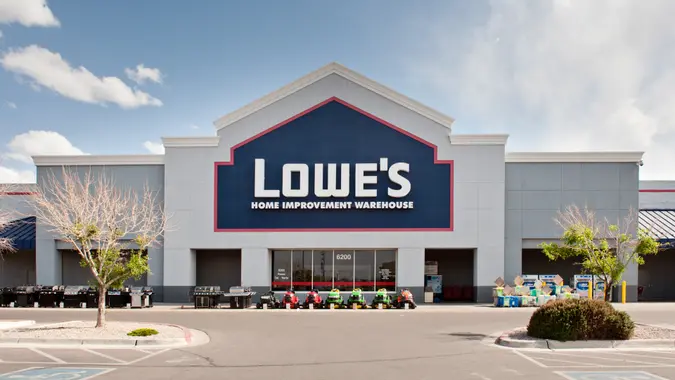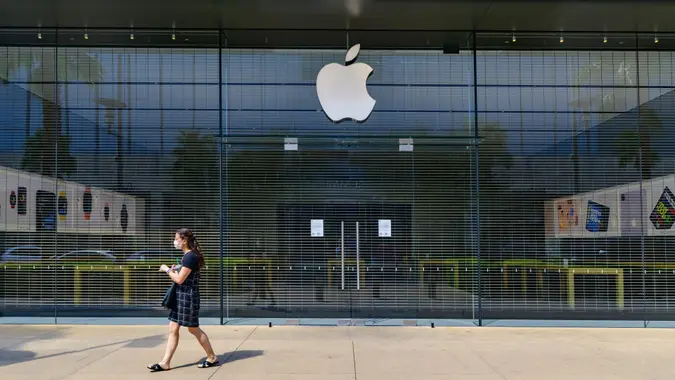How To Save on Car Insurance as a High-Risk Driver

Commitment to Our Readers
GOBankingRates' editorial team is committed to bringing you unbiased reviews and information. We use data-driven methodologies to evaluate financial products and services - our reviews and ratings are not influenced by advertisers. You can read more about our editorial guidelines and our products and services review methodology.

20 Years
Helping You Live Richer

Reviewed
by Experts

Trusted by
Millions of Readers
If you’ve accumulated some traffic violations, been at fault in a few car accidents or recently filed multiple car insurance claims, your car insurance rates may climb. When someone is classified as a high-risk driver, their car insurance provider will likely raise their rates to make up for the increased risk it assumes by insuring them.
Car insurance is a big expense for any budget. According to U.S. News & World Report, the national average car insurance rate for good drivers is $2,068. For drivers with one speeding ticket, that annual cost goes up to $2,503, and it goes up to $2,940 for drivers with one accident.
According to Seann Malloy, managing partner and lead personal injury attorney at Malloy Law Offices, if an insurance company determines that you’re a high-risk driver, you’ll quickly see a significant increase in insurance premiums or other consequences. “Some insurers may even refuse to offer standard policies to high-risk drivers, leaving them with no choice but to purchase specialized high-risk insurance,” Malloy explained. These high-risk policies can cost two to three times more than a regular auto insurance policy.
Paying higher rates for car insurance as a high-risk driver can cause financial strain, but there are several ways to save on car insurance costs.
Identify Why You’re High-Risk
It’s important to identify why you’re being categorized as a high-risk driver so you can avoid that categorization in the future.
Melanie Musson, a car insurance expert with CarInsurance.org, explained that car insurance providers use your driving history as a primary factor when determining if you are high-risk. “Someone with several traffic tickets, a couple of car accidents or a DUI on their record presents an insurance company with a higher risk of having to pay out a claim, so those drivers are classified as high-risk and charged higher premiums,” she explained.
Your age may also impact your insurance rates. According to Musson, brand-new drivers don’t have the experience to build a record, and they’re statistically more likely to be involved in an accident, so young drivers are categorized as high-risk.
If you’re not sure why you’re being categorized as a high-risk driver, contact your car insurance company for clarification.
Take a Driving Safety Course
According to Malloy, many insurance companies offer discounts to high-risk drivers who complete a defensive driving course or a driver improvement course.
“Upon finishing the course, drivers may receive a discount ranging from 5% to 15% on their insurance premiums,” he explained. “High-risk drivers can often reduce their insurance rates by participating in these courses, though the specifics depend on the insurer’s policies and state regulations.”
Malloy highlighted the fact that not all driving courses will qualify for a discount, and insurance companies often accept programs only from specific organizations. Contact your insurance company to ask about whether it offers discounts for courses and which courses qualify for a discount.
Look for Car Insurance Discounts
Many car insurance providers offer discounts that can help you save on your insurance costs, even while you’re categorized as a high-risk driver.
“Paperless billing usually results in a discount regardless of driving history,” Musson explained. “Being a military member will often help drivers get a discount. Bundling home and auto insurance usually results in a discount.”
Consider a Higher Deductible
Malloy suggested that high-risk drivers consider choosing a higher deductible, which can lower monthly premiums. “For example, increasing your deductible from $500 to $1,000 may reduce your premium,” he said.
However, you should consider this option only if you can afford to pay the higher deductible in the event you have to file an insurance claim. If you choose a higher deductible, it’s a good idea to set that deductible aside in a savings account so you know you have it ready if you need it.
Choose an Affordable Vehicle
The value of your car can also impact your car insurance premiums, so carefully choose the vehicle you drive. “Choose economical models like Toyota Camry, which have lower repair costs and insurance rates,” Malloy said.
You might also consider purchasing only liability coverage instead of collision or comprehensive coverage if your car has a low value, such as under $5,000. Just make sure that your policy still meets your state’s minimum car insurance requirements.
Shop Around for Car Insurance
Shopping around for car insurance may also help you save money as a high-risk driver. “Even though car insurance companies use similar factors when calculating rates, they use different calculations,” Musson explained. “So what is a big deal and results in high premiums for one company might not have such an impact with another company.”
Take the time to shop around and compare quotes from multiple insurance companies. When you compare the policies, make sure that you not only review the premiums but also consider how the policy types, coverage limitations and exclusions stack up.
Focus On Driving Safely
While there are many ways to save on car insurance rates as a high-risk driver, no longer being classified as high-risk is necessary to get those rates to return to normal. According to Malloy, accidents and traffic violations typically fall off your driving record after three to five years, and you’ll be able to qualify for lower rates once those violations are no longer on your driving history.
“A bad record doesn’t last forever,” Musson said. “Start driving carefully, avoid making claims, and within three years, you should see much lower premiums.”
More From GOBankingRates
- Nearly 1 in 3 Americans Hit by a Costly Holiday Scam, Norton Survey Shows -- How To Avoid This
- Here's What Retirees Wasted the Most Money On in 2025 -- and How To Avoid It in 2026
- How Middle-Class Earners Are Quietly Becoming Millionaires -- and How You Can, Too
- 6 Safe Accounts Proven to Grow Your Money Up to 13x Faster
 Written by
Written by  Edited by
Edited by 

























